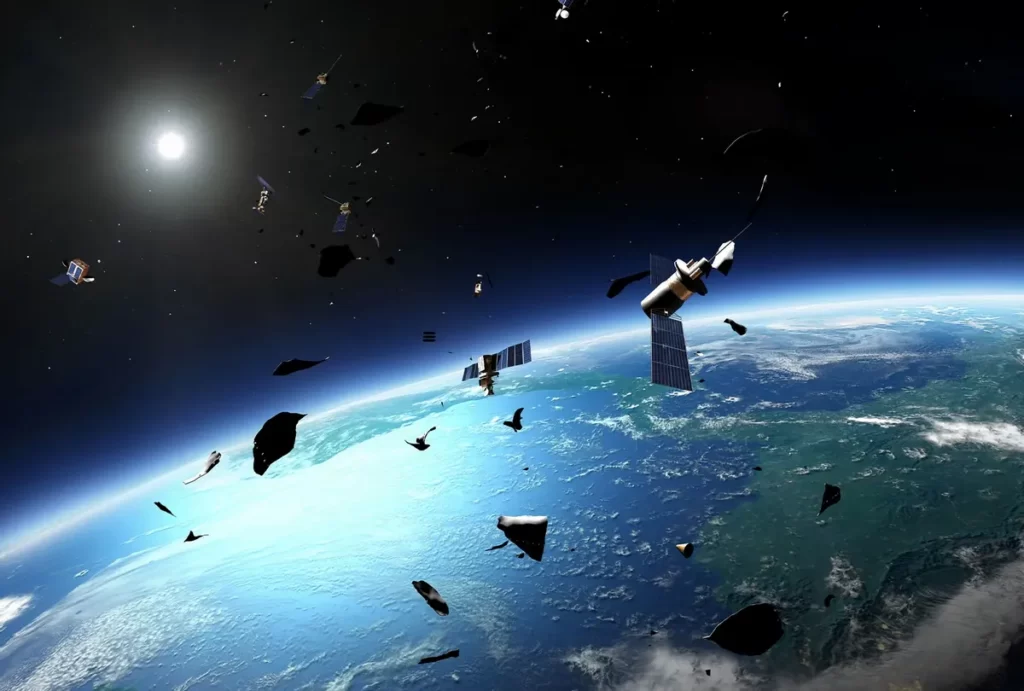Clearing the Path: Innovative Technologies for Space Debris Cleanup
As humanity continues to explore and utilize space for communication, exploration, and scientific discovery, a growing threat looms overhead: space debris. Orbiting debris, ranging from defunct satellites to discarded rocket stages, poses a significant hazard to active spacecraft and satellites, jeopardizing vital space missions and the safety of astronauts. However, amidst this orbital clutter, a new frontier of technology is emerging, dedicated to cleaning up the debris-ridden skies. In this article, we delve into the innovative technologies and approaches aimed at mitigating the menace of space debris and ensuring the sustainability of space exploration.
The Space Debris Conundrum
Space debris, also known as space junk or orbital debris, comprises fragments of defunct satellites, spent rocket stages, and other debris generated by collisions or satellite breakup events. With thousands of objects larger than a centimeter and millions of smaller fragments hurtling through space at velocities exceeding 28,000 kilometers per hour, even a tiny speck of debris poses a grave risk to operational satellites and spacecraft.
Innovative Cleanup Technologies

Efforts to tackle the space debris challenge have spurred the development of a diverse array of cleanup technologies, including:
- Active Debris Removal (ADR) Systems: ADR systems deploy spacecraft equipped with robotic arms, nets, harpoons, or grappling mechanisms to capture and deorbit defunct satellites and large debris objects. Initiatives such as the European Space Agency’s ClearSpace-1 mission aim to demonstrate the feasibility of ADR technologies by targeting the removal of specific debris objects from orbit.
- Space-Based Lasers: Proposed space-based laser systems could target and vaporize small debris particles, causing them to lose velocity and deorbit harmlessly into the Earth’s atmosphere. While still in the conceptual stage, such laser systems could offer a cost-effective means of clearing vast swaths of orbital space.
- Electrodynamic Tethers: Electrodynamic tethers deploy conductive wires or tapes from spacecraft to interact with the Earth’s magnetic field, generating drag that slows down and deorbits the spacecraft along with attached debris. This passive cleanup method offers an energy-efficient means of removing debris from orbit.
- CubeSat Deployers: CubeSat-based cleanup missions leverage small, low-cost satellites to demonstrate debris capture and deorbiting technologies. CubeSats equipped with drag sails, ion thrusters, or deployable nets could rendezvous with debris objects and facilitate their controlled reentry into the Earth’s atmosphere.
Challenges and Considerations
Despite the promise of space debris cleanup technologies, several challenges and considerations must be addressed:
- Cost and Scalability: Space debris cleanup missions entail significant costs and technical challenges, requiring international collaboration and investment to develop scalable and cost-effective solutions.
- Regulatory Frameworks: Clearing space debris raises legal and regulatory questions regarding ownership, liability, and jurisdiction over orbital space. International agreements and guidelines are essential to govern space debris mitigation efforts and ensure equitable access to space resources.
- Long-Term Sustainability: Space debris cleanup is just one aspect of ensuring the long-term sustainability of space activities. Strategies for debris prevention, spacecraft design for end-of-life disposal, and space traffic management are crucial components of a holistic approach to space governance.
Towards a Cleaner Cosmos
As humanity ventures deeper into space, the need to address the threat of space debris becomes increasingly urgent. By harnessing the ingenuity and collaboration of the global space community, innovative cleanup technologies offer a glimmer of hope for restoring the pristine beauty of the cosmos and preserving the infinite possibilities of space exploration for future generations. From robotic rendezvous missions to space-based lasers, the tools of tomorrow hold the key to a cleaner, safer, and more sustainable space environment.